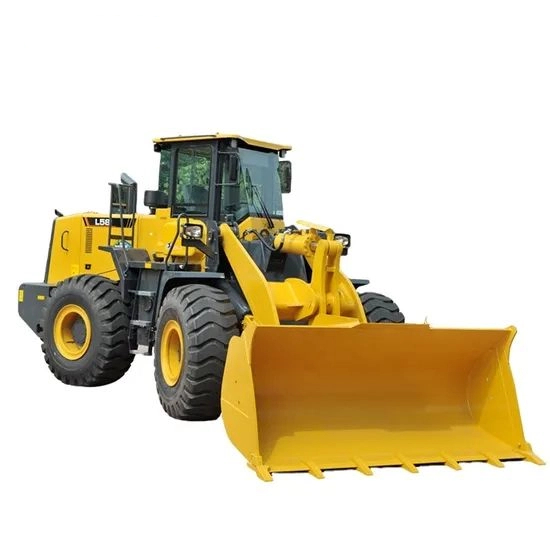As a widely used construction machinery, loaders can create significant value through various means. The following analysis is conducted from different dimensions:

- Loaders can quickly complete operations such as shoveling, handling, and unloading. A single device can process tens to hundreds of tons of materials per hour, equivalent to the workload of dozens of workers. For example, on construction sites, the efficiency of loaders in handling sand and gravel is over 50 times that of manual labor, greatly shortening the construction period and reducing labor input.
- The adaptation of multi-functional attachments (such as log forks and breaker hammers) enables one device to replace multiple machines (such as forklifts and small crushers), avoiding the cost of repeated equipment purchases.
- In logistics and warehousing scenarios, loaders can load/unload containers or handle goods at a speed of 2-3 times per minute, accelerating cargo turnover and helping enterprises increase throughput. For instance, ports using loaders in conjunction with truck transportation can enhance cargo handling capacity by over 30%, directly boosting operational profits.
- In the mining industry, loaders cooperating with dump trucks to transport ores can assist in transferring thousands of tons of materials daily, supporting the improvement of mine production capacity.
- Compared with equipment like excavators and bulldozers, loaders have lower prices (the cost of small and medium-sized models is about 1/3 to 1/2 that of excavators) and diverse functions, making them suitable for procurement by small and medium-sized projects or enterprises. For example, small farms using loaders to clean manure can replace manual labor in the long term with a single investment, reducing operational costs.
- In infrastructure projects such as highways, railways, and real estate, loaders undertake basic tasks like earthwork excavation and material transportation, serving as "essential" equipment for engineering construction. For example, in highway construction, loaders are responsible for handling subgrade fillers, laying the foundation for subsequent processes and accelerating infrastructure implementation.
- In agriculture, loaders are used for grain loading and farmland leveling, enhancing the mechanization level of agricultural production. For instance, large farms using loaders to load feed can automate the breeding process and improve breeding efficiency.
- Although loaders have limited precision, they can complement equipment such as excavators and trucks: excavators handle fine excavation, loaders handle short-distance transportation, and trucks handle long-distance transportation. The synergy of the three enhances engineering efficiency. For example, in mining, this combination can increase the efficiency of material handling processes by over 40%.
- The promotion of electric loaders can reduce fuel consumption and exhaust emissions (reducing pollutant emissions by over 90% compared to diesel models), meeting the environmental protection requirements of urban construction. This helps enterprises obtain environmental protection qualifications and expand into high-end markets (such as municipal engineering and green building projects).
- Loaders equipped with autonomous driving and intelligent weighing systems can achieve unmanned operations (such as nighttime transportation in mines) and precise load control, reducing human errors and improving safety. For example, some mining areas using unmanned loaders have achieved 24-hour continuous operations while reducing accident risks, increasing production capacity by 20%.
- In disaster relief for earthquakes, floods, and other emergencies, loaders can quickly clear debris and open channels, saving time for rescue teams. For instance, during the Wenchuan earthquake rescue, loaders participated in road clearance, becoming one of the key equipment for post-disaster reconstruction.
- The bucket capacity of loaders is typically 1-5 cubic meters. Compared with dump trucks (with a capacity of 10-30 cubic meters), the fuel consumption and efficiency of loaders are not proportional for long-distance transportation, making them more suitable for short-distance (within 500 meters) transfer.
- Loaders cannot replace excavators in high-precision construction such as pipeline laying and foundation pit support. They need to be used in conjunction with other equipment to maximize their value.
Through efficient operations, cost optimization, and multi-scenario adaptation, loaders have created irreplaceable value in economic production, infrastructure projects, industrial upgrading, and other fields. The core of their value lies in the "high efficiency of short-distance material handling" and the "versatility of equipment functions." With the development of electrification and intelligent technologies, the value boundaries of loaders are continuously expanding, and they will release more potential in scenarios such as green construction and unmanned operations in the future.

